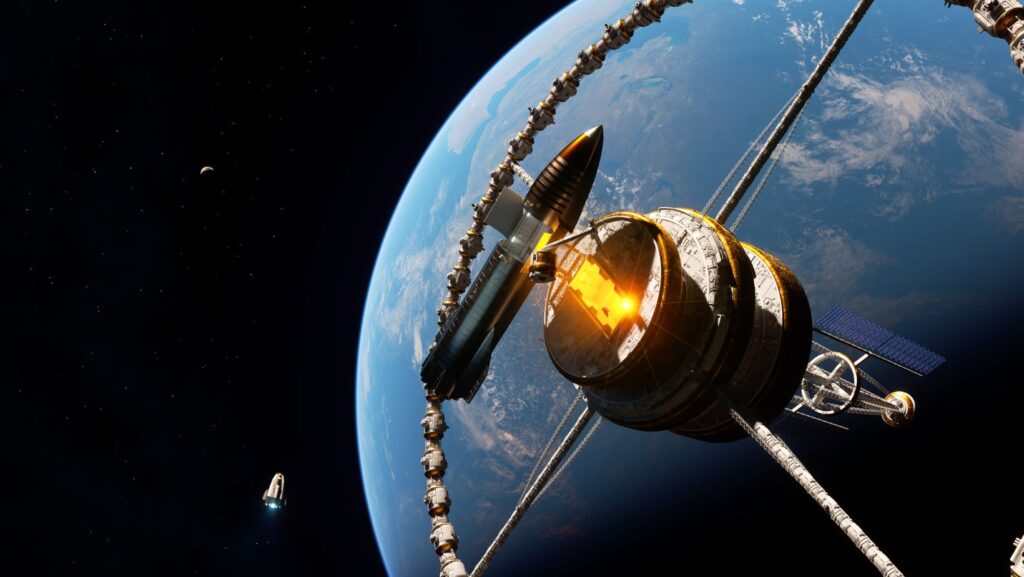
On April 12, 2024, Space X broke another record by launching its Starlink satellites, recording the 20th flight of its Falcon 9 rocket. This event marked a new reusability record for the company’s rocket. It is a crucial part of its vision to achieve varying explorations while reducing the cost of spaceflights and other activities. The last few years have been significant for cosmic companies and startups, and some recent innovations making rounds today indicate even better days to come. The returns of investing in these systems are as exciting as playing your favorite slot game on mrbet, which is why we see more funding going into the operation daily.
According to Space News, about $17.9 billion has been invested in the global space economy in 2023, and more possibilities exist. Innovators and creative startups are working on some significant milestones for the sector, and here are 5 of them that you need to look out for in 2024.
Relativity Space
Relativity Space (RS) is the first-ever startup to 3D print rockets. It is developing new and creative ways to design and fly rockets. The project launched in 2015 and is located in Los Angeles, California. Relativity Space’s achievements include the first 3D-printed rocket, Terran 1, and then Terran R, which could be the biggest reusable rocket in the market. The company is among the few regarded as a pioneer in future space, considering that it integrates 3D printing, artificial intelligence, and autonomous robotics in its creations. If RS successfully launches the Terran R, it would be a direct competitor to Space X’s Falcon 9. So far, it accounts for:
- $1.34 billion in 7 seed rounds;
- 501-1000 employees;
- 57 investors.
Firefly Aerospace
With over 700 employees today, Firefly Aerospace is growing to become one of the most influential companies in the industry. It is a Texas-based company supporting regular launches, on-orbit missions, and lunar landings. Firefly Aerospace launched Elytra orbital vehicles last year, representing an expansion of the platform’s on-orbit services.

The Elytra vehicle opened access to more orbits and has contributed to the plans to extend the life of every space mission. It also came with the perks of quicker launches, deployments, and more extensive and advanced on-orbit missions. Firefly Aerospace recently got awarded a $112 million contract by NASA to deliver several Lunar payloads by 2026. Although the company started in 2017, its accomplishments have made it a leading contributor to the industry.
Astranis
Astranis is another leading startup located in California. It specializes in geostationary communications satellites capable of connecting 4 billion people with limited internet access. Astranis was established in 2015 and has seen some growth since its debut. It currently has 251-500 employees and 47 investors. The company recently secured a deal to deliver 2 MircroGEO satellites to Mexican Apco Networks, which signifies a potential expansion in its operation. Astranis is also actively working towards developing small, dedicated satellites for businesses and countries of different scales. It successfully launched a test orbit and plans to commercialize its services fully. Astranis has raised $553 million in total funding so far.
Orbex
Orbex is a low-cost orbital launch startup that aims to provide flexible services for small satellite industries. The company offers advanced launch space vehicles that are more reliable, faster, and affordable.

Orbex started in 2015 and is gradually coming closer to its final launch. Its Orbex Prime project is a 2-stage rocket that is 19 meters tall and will be capable of launching small satellite payloads of 180kg. Although the company hasn’t concluded on a final launch date, rumors say this will be possible this year. Orbex is a UK-based cosmic exploration firm that has raised over 56 million pounds since it started operations and could achieve some significant milestones in 2024.
Gravity
Gravitics tops the list of next-generation hardware space companies of today. It was recently launched in 2021 and is devoted to its dreams of manufacturing structures for human life in space. Gravitics stole the show with the $20 million funding from its seed round in November 2022. Its main project is the super-sized module known as StarMax, which is currently under construction. StarMax is a flexible and durable station module built to be a critical building block for future commercial cosmic stations. It will have a diameter of 7.6km, a height of 9.8m, and a 400m volume. To achieve this goal, Gravitics launched a 42,000-square-foot facility in Seattle to begin assembling this module.
Space Technology Is Reaching New Heights
Looking at the achievements and projects being initiated by startups in the past years, many would agree that the industry is reaching new heights. There are plans to introduce artificial intelligence, robotics, and next-generation technology into cosmic explorations. The excitement to see results is over the roof presently. However, it is worth noting that the technology behind this industry is a lot more complex than meets the eye, and there is still a lot more to be done in ushering in the era we all look forward to.











